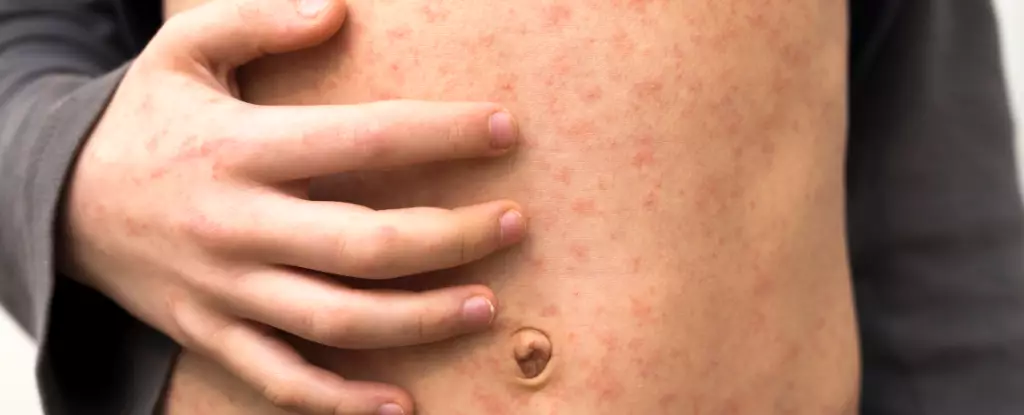As of late March 2025, the measles outbreak that originated in west Texas has spiraled into a significant health crisis, with upwards of 400 confirmed cases in Texas alone and over 50 reported in neighboring states like New Mexico and Oklahoma. Public health experts are raising alarms, cautioning that the actual number of cases could be substantially higher due to underreporting or misdiagnosis. This worrying trend marks the potential resurgence of a disease that many believed was largely under control due to successful vaccination programs.
The outbreak is by no means isolated; potential exposure has been identified through a variety of modes of transportation, including major airports like Washington Dulles and public transit such as Amtrak trains. These revelations underscore the disease’s capacity to spread rapidly when vaccination rates drop. As a biologist studying the virulence of pathogens, I find it crucial for the public to grasp the severity of measles beyond its superficial image as a simple childhood illness.
The Severity of Measles Infections
Measles is often trivialized as just another childhood rash coupled with a fever, but this perspective is dangerously naive. The disease is highly contagious, with studies indicating that one infected individual can transmit the virus to up to 90% of unvaccinated people in their vicinity. In the current outbreak, 14% of affected individuals required hospitalization—a marked drop from last year’s 40%, yet still alarmingly high.
The essence of the danger lies in the virus’s mechanism of action. Upon infection, the measles virus binds to specific receptors on host cells to inject its genetic material. This not only leads to the immediate destruction of healthy cells in the respiratory system but also decreases the host’s ability to fend off other infections. The complications that arise, such as viral pneumonia, are not just statistical anomalies; they represent very real threats to public health.
Neurological and Immunological Risks
The repercussions of measles extend beyond respiratory distress. Neurologically, the virus can inflict acute brain damage through several pathways—either by directly attacking brain cells or triggering damaging inflammatory responses. Alarmingly, the incidence of long-term neurological impairments, including conditions like subacute sclerosing panencephalitis (SSPE), cannot be overlooked. SSPE, a progressive and fatal form of dementia, manifests years after a measles infection, predominantly in those infected before the age of one.
Moreover, measles compromises the immune system, diminishing its ability to recognize pathogens it has battled in the past. This phenomenon means that recovering from measles can leave individuals vulnerable to future infections, highlighting the broader public health ramifications. The child’s immune system, ideally capable of combatting bacterial and viral threats, is left in a significantly compromised state.
The Importance of Vaccination
Given the gravity of measles and its capacity to wreak havoc, the emphasis on vaccination cannot be overstated. A two-dose vaccination regimen boasts a 97% effectiveness rate in preventing the disease. This stark contrast highlights the urgent need to maintain high vaccination rates, particularly in communities where misinformation regarding vaccine safety proliferates. Ignorance is a breeding ground for viral resurgence, which we are witnessing firsthand as skepticism surrounding vaccines breeds outbreaks.
Nobody should view measles as a mere childhood inconvenience. It is vital to educate communities to dismantle myths surrounding vaccination. Misunderstandings regarding the safety and efficacy of the measles vaccine can have dire repercussions, propelling the virus into a population ill-prepared to combat its spread.
A Call to Action for Public Awareness
The time for complacency has passed; public health authorities and communities must actively work to raise awareness about the importance of vaccines. Strategies might include more robust educational campaigns that offer clear, scientifically-backed information about both the dangers of measles and the protective measures that vaccines provide. Parents should be empowered with knowledge, enabling them to make informed decisions regarding their children’s health.
The plight we face today with measles should remind us of the fragility of herd immunity. It’s a collective effort—vaccination protects not just individuals but also their communities. As the outbreak demonstrates, once complacency settles in, the consequences can manifest in heartbreaking numbers. Society must rise to the occasion, fostering an environment that prioritizes health, safety, and the well-being of every child.


Leave a Reply